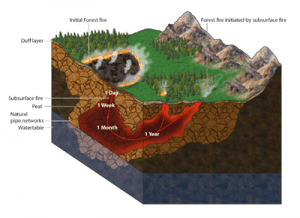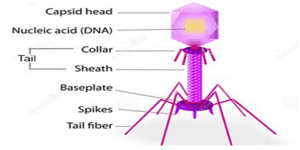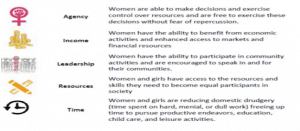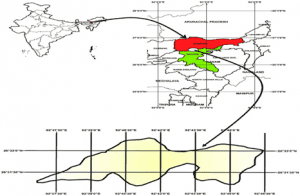1. ZOMBIE FIRES
TAG: GS 1: GEOGRAPHY
THE CONTEXT: Canada’s extreme wildfire season offers a glimpse of new risks in a warmer, drier future. As global temperatures rise, zombie fires are also spreading farther north and into the Arctic.
EXPLANATION:
- Earlier, the blanket of wildfire smoke spread across large parts of the U.S. and Canada, signifying apocalyptic orange skies and air pollution levels.
- These fires are not just burning in trees and grasses. New research on the exceptional Arctic fire seasons of 2019 and 2020 points to fires moving into the ground as well. These underground fires are known as “zombie fires”.
- First, as the organic-rich Arctic soils dry up because of changing climate conditions, they can burn slowly and release vast amounts of smoke into the atmosphere.
- Second, soil fires that spread underground are harder for firefighters to tame and extinguish, thus demanding more resources for longer periods of time.
- In areas where carbon-rich peatlands are common, people are dealing with fires smouldering to depths dozens of feet underground.
- As these soil fires don’t die easily, as recent research finds that Arctic soil fires can smoulder through the winter and reignite during early spring when temperatures rise, hence the nickname “zombie fires.”
What is a zombie fire?
- Most people picture wildfires as catastrophic flames consuming trees and grasses.
- Zombie fires are ground fires that do not flame but burn more slowly and have the tendency to spread deep into the ground and spread laterally.
- The result is that ground-smoldering fires are not only less visible, but they are also less accessible and require digging up and dousing with lots of water.
- These smouldering fires also produce more smoke because of their lower temperature of combustion.
- Ultra-fine particles in smoke are particularly harmful to the respiratory and cardiovascular systems and can be carried far and wide by winds.
- Because of the slow combustion process and the abundance of fuel in the form of carbon and oxygen, smouldering ground fires can also burn for months and sometimes years.
- Some of these ground fires can become so massive that they release smoke plumes that cover vast geographical regions.
- In 1997, peat fires in Indonesia sent dangerous levels of smoke across Southeast Asia and parts of Australia and increased carbon emissions. They were ignited by slash-and-burn activities to plant palm plantations and amplified by drought conditions during a severe El Niño event.

Reasons:
- Wildfires have been a natural part of the northern forest and tundra ecosystems for thousands of years.
- Rising temperature: The Arctic is warming nearly four times faster than the rest of the world, a phenomenon known as Arctic amplification, i.e. the Arctic has already exceeded a 2 C (3.6 F) increase compared with pre-industrial times.
- Changes in atmospheric circulation: It creates periods of extreme heat, dry out vegetation and reduces moisture in soils, and, importantly, leads to more frequent lightning strikes that can spark blazes.
- Lightning: Although lightning remains infrequent at very high latitudes, it is expected to increase and expand over larger territories into the far north as the climate warms and generates more storms that can produce lightning. In 2022, thousands of lightning strikes helped spark one of Alaska’s worst fire seasons on record.
- Peatleads: As the Arctic warms and fires move farther northward, peat soils rich in dead plant material burn at an accelerated rate. Northern ecosystems store twice as much carbon in their peat and permafrost as the atmosphere, and both are increasingly vulnerable to fire.
2. BACTERIOPHAGES
TAG: GS 3: SCIENCE AND TECHNOLOGY
THE CONTEXT: With antibiotic resistance rising, scientists think bacteriophages which hunt and kill bacteria could cure bacterial infections.
EXPLANATION:
- Outbreaks of viral diseases, such as smallpox, influenza, HIV, and COVID-19, have killed billions and fundamentally shaped societies throughout human history.
- But not all viruses are bad; similar to bacteria, “good” or “friendly” viruses can also be beneficial for health.
- Scientists now talk of a virome which is all the different types of viruses that a human body hosts in bodies which contribute to health, much like the bacterial microbiome.
- A person has 380 trillion virus particles living (or existing) in the body right now, i.e. 10 times more than the number of bacteria.
- These viruses lurk in our lungs and blood, live on our skin and linger inside the microbes in our guts.
- There are viruses that kill cancer cells and help break down tumours, others that train our immune system and help them fight pathogens and even some that control gene expression in pregnancy.
Bacteriophages: Anti-bacterial guard dogs
- The vast majority of viruses inside us are bacteriophages which are the viruses that kill bacteria in our microbiomes.
- Bacteriophages, also known as phages, are harmless to human cells as they do not recognize them as their bacterial prey.
Mechanism of Bacteriophages:
- They work by hunting down bacteria and attaching themselves to the surface of a bacterial cell before injecting viral DNA material into the cell.
- The viral DNA then replicates inside the bacteria, sometimes by borrowing the DNA replication hardware of the bacteria.
- Once enough new viruses have been created inside the bacterial cell, the cell then bursts to release the new viral particles.
- All this takes just 30 minutes, meaning one virus can become many in a couple of hours.

Phage therapy:
- The advantages of phages lie in their effectiveness against every multi-resistant pathogen. Phages are extremely precise in their elimination of bacterial strains that won’t disturb the gut microbiome, as is the case with antibiotics.
- Phages could be a huge boon in our fight against antibacterial resistance.
- Due to the scarcity of antibiotics in Soviet-era Russia, phages were used to treat bacterial infections, and their use has continued in countries like Georgia, Ukraine and Russia for decades.
- However, Phage therapy must be precisely tailored to the bacteria that cause an infection in a patient, as bacteria do also develop resistance to phage therapies.
3. WOMEN’S EMPOWERMENT INDEX (WEI) AND THE GLOBAL GENDER PARITY INDEX (GGPI)
TAG: GS 1: SOCIETY; GS 2: SOCIAL JUSTICE
THE CONTEXT: According to a UN report, only 1% of women live in countries with high gender parity, and female empowerment. In India, women empowerment, gender parity was found to be ‘low’ despite ‘medium’ human development.
EXPLANATION:
- They are a first-of-its-kind report that presents a comprehensive analysis of the progress made in the human development of women and girls was jointly created by two UN agencies, i.e. UN Women and UN Development Programme.
- The bodies collated data from 114 countries and analysed them based on the twin indices of the Women’s Empowerment Index (WEI) and the Global Gender Parity Index (GGPI).
- This report highlights the global challenges faced by women and provides a roadmap for targeted interventions and policy reforms. The report introduces two new indices:
- The Women’s Empowerment Index (WEI) measures women’s power and freedom to make choices.
- The Global Gender Parity Index (GGPI) evaluates the status of women relative to men in core dimensions of human development and exposes gaps in parity between women and men.
- Combined, these indices offer a comprehensive assessment of countries’ progress in achieving gender equality.
- The WEI focuses solely on women, measuring their power and freedom to make choices and seize opportunities in life.
Findings of the report:
- According to the report by the United Nations, only an abysmal 1% of women across the world live in countries that have managed to achieve both high women empowerment and gender parity.
- The report noted leadership roles and decision-making still mostly lie with men and are unavailable to women.
- As per WEI, on average, women are empowered to achieve only 60 per cent of their full potential.
- As measured by the GGPI, women were also found to achieve 28 per cent less than men across key human development dimensions.
- None of the 114 countries analysed achieved full women’s empowerment or complete gender parity.
- More than 90 per cent of the global population of women live in countries with low or middle women’s empowerment and low or middle performance in achieving gender parity.
- In India, women’s empowerment and gender parity were both found to be ‘low’, although it was assessed to be in the ‘medium’ category in terms of human development.
- It was found that about 8 per cent of women and girls live in countries with low or middle women’s empowerment but high performance in achieving gender parity.
- The report identified areas where comprehensive policy action is needed:
- Health policies: Support and promote long and healthy lives for all, with a focus on universal access to sexual and reproductive health
- Equality in education: Address gaps in skills and quality of education, especially in fields such as STEM, to empower women and girls in the digital age
- Work-life balance and support for families: Invest in policies and services that address work-life balance, including affordable quality childcare services, parental leave schemes, and flexible working arrangements
- Women’s equal participation: Set targets and action plans for achieving gender parity in all spheres of public life and eliminate discriminatory laws and regulations that hold women back
- Violence against women: Implement comprehensive measures focused on prevention, changing social norms, and eliminating discriminatory laws and policies
WOMEN’S EMPOWERMENT INDEX (WEI)
- The WEI is a composite index designed to measure progress in the multi-dimensional aspects of women’s empowerment.
- Empowerment is considered a factor of both women’s achievements as well as of gender parity with men.
- WEI measures progress on women’s empowerment by aggregating results across five key areas (or “domains”). Each domain is comprised of a series of metrics (or “indicators”) which quantifies performance in this domain.

THE GLOBAL GENDER PARITY INDEX (GGPI)
- It is a socioeconomic index usually designed to measure the human development of males and females.
- It measures attempts to eliminate gender disparities and emphasizes the plight of girls with unequal access in third-world countries.
- It is often used in order to identify nations and regions that are in need of economic development and equality.
- For any development indicator, one can define the GPI relative to this indicator by dividing its value for females by its value for males.
- A GPI value less than one is an indication that gender parity favours males, while a GPI value greater than one designates that gender parity is in favour of females.
- The closer a GPI is to one, the closer a country is to achieving equality of access between males and females. A nation is said to have achieved gender parity when its GPI value falls within the range of 0.97 and 1.03.
4. U.S.-INDIA STRATEGIC CLEAN ENERGY PARTNERSHIP (SCEP)
TAG: GS 2: INTERNATIONAL RELATIONS; GS 3: ENVIRONMENT
THE CONTEXT: India and the US emphasized the need for joint action and collaboration to navigate the global energy transition during the Ministerial meeting of the U.S.-India Strategic Clean Energy Partnership (SCEP).
EXPLANATION:
Highlights of the meeting:
- A joint statement said that both sides renewed their commitment to work towards a just, orderly and sustainable energy transition, which prioritizes access to reliable, affordable, and clean energy supply.
- The statement said that during the meeting, both the countries noted the growing importance of bilateral energy cooperation between the countries while underscoring the critical importance of bilateral clean energy engagement.
- They highlight the achievements of the SCEP in strengthening energy security, creating opportunities for clean energy innovation, addressing climate change and creating employment generation opportunities.
- They reviewed the mandates of SCEP, which over the years has deepened collaboration across a wide breadth of clean energy work streams, including clean and renewable energy, energy efficiency, and increased collaboration in emerging technologies.
- Both sides recognised the importance of producing green/clean hydrogen as a critical energy source for global decarbonisation and agreed to support each other’s national hydrogen missions.
- The sides also acknowledged that successfully achieving ambitious climate and clean energy aspirations necessitates coordinated efforts on development of energy transition roadmaps, capacity building, job skilling, and sharing of best practices at all levels of government.
- In that context, the sides agreed to work toward development of net zero villages in India to support the clean energy transition.”
Strategic Clean Energy Partnership (SCEP):
- A high-level U.S.- India Climate and Clean Energy Agenda 2030 Partnership was announced jointly by the Indian Prime Minister and US President on the margins of the April 2021 Leaders’ Summit on Climate.
- It aims to advance shared climate and clean energy goals.
- The Agenda 2030 Partnership includes two tracks in the form of the Strategic Clean Energy Partnership (SCEP) and the Climate Action and Finance Mobilization Dialogue.
- The SCEP was earlier established as the Strategic Energy Partnership in 2018 and had replaced the U.S.-India Energy Dialogue, the previous intergovernmental engagement for energy cooperation.
- The SCEP advances energy security and innovation with greater emphasis on electrification and decarbonization of processes and end uses, scaling up emerging clean energy technologies while finding solutions for hard-to decarbonize sectors.
- Engagement with the private sector and other stakeholders will remain a priority.

- The Strategic Clean Energy Partnership’s Renewable Energy Pillar objectives are aligned to drive faster deployment of renewable energy for inclusive and resilient development, taking into account national circumstances and sustainable development priorities.
- The overarching goal is to enhance equitable economic development, universal energy access, and energy security in India, with broader benefits through South Asia and the Indo-Pacific region as a whole.
5. BURA CHAPORI WILDLIFE SANCTUARY
TAG: GS 3: ENVIRONMENT
THE CONTEXT: Recently, in Assam’s Bura Chapori Wildlife Sanctuary, violence erupted, leaving one woman, Rahima Khatun, dead and six others, including three forest guards, injured.
EXPLANATION:
- The picturesque location first made news in February,2023 when it was at the centre of a massive eviction exercise during which the forest department cleared 1,282 hectares of land where more than 2,000 people had set up homes.
Bura Chapori Wildlife Sanctuary
- It is a protected area located in the state of Assam in India. It is located in Sonipat district, 40 km from Tezpur town and 181 km away from Guwahati.
- This wildlife sanctuary covers 44.06 km2 on the south bank of the Brahmaputra River.
- The area was declared a Reserved forest in 1974; it became a sanctuary in 1995.
- It comprises of a mosaic of wet alluvial grassland, riparian and semi-evergreen forests dotted by wetland and river systems.
- It forms an integral part of the Laokhowa-Burachapori ecosystem and is a notified buffer of the Kaziranga Tiger reserve.

Biodiversity
- This sanctuary is home to the different mammals. Reptiles and fish are also found here.
- Mammals: Great Indian one-horned rhinoceros, tiger, leopard, wild buffalo, hog deer, wild pig, and elephants.
- Several wetlands within the wildlife sanctuary also make it an ideal breeding place for several species of migratory birds during the winter season.
- Bird: Bengal Florican, Black-necked Stork, Mallard, Open billed Stork, Teal, and Whistling Duck among others.
- The grassland is also rich in various kinds of medicinal herbs and plants.

